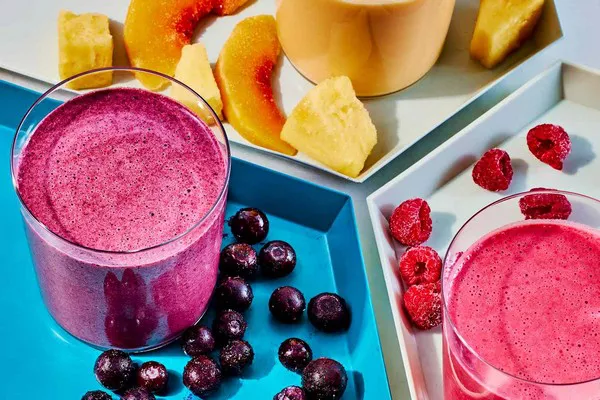Christmas is a time of festive celebrations, cherished traditions, and, of course, delicious food. Around the world, different cultures have their own unique culinary traditions associated with Christmas. From comforting roasts to decadent desserts, Christmas food reflects both regional customs and global influences. This article explores the diverse array of dishes that are considered Christmas food, highlighting their significance, preparation methods, and cultural contexts.
Traditional Christmas Foods Around the World
United States
In the United States, Christmas dinner often centers around a hearty roast, such as:
- Roast Turkey: A symbol of abundance and tradition, roasted turkey is a staple of American Christmas dinners. It’s typically accompanied by stuffing, cranberry sauce, and gravy.
- Ham: Glazed ham is another popular choice, often served alongside roasted vegetables and potatoes.
- Side Dishes: Green bean casserole, mashed potatoes, sweet potato casserole, and dinner rolls are common side dishes.
United Kingdom
In the UK, Christmas dinner, also known as a “Christmas feast,” includes:
- Roast Turkey or Goose: Roast turkey is prevalent, but roast goose is also traditional in some regions.
- Stuffing and Pigs in Blankets: Sage and onion stuffing and “pigs in blankets” (sausages wrapped in bacon) are popular accompaniments.
- Christmas Pudding: A rich, dense fruit pudding soaked in brandy or rum and flamed before serving is a traditional dessert.
- Mince Pies: Small, sweet pies filled with mincemeat (a mixture of dried fruits and spices).
Italy
In Italy, Christmas Eve, known as “La Vigilia,” features a meal of:
- Seven Fishes: A traditional feast with seven different types of seafood dishes, symbolizing the number of sacraments in the Catholic Church.
- Pasta Dishes: Dishes like seafood pasta, often with squid ink, and lasagna are common.
- Panettone: A sweet, brioche-like bread studded with candied fruits, enjoyed as a dessert.
France
In France, Christmas dinner, or “Le Réveillon de Noël,” includes:
- Roast Capon or Turkey: Roast capon (castrated rooster) or turkey is typically served as the main course.
- Foie Gras: Often served as an appetizer, accompanied by crusty bread or toast points.
- Bûche de Noël: A festive dessert resembling a Yule log, made of sponge cake rolled and filled with buttercream, often decorated with chocolate.
Germany
In Germany, Christmas, or “Weihnachten,” is celebrated with:
- Roast Goose: Roast goose, often stuffed with apples, chestnuts, and prunes, is a traditional Christmas dish.
- Red Cabbage: Sweet and sour red cabbage, flavored with apples and spices, is a common side dish.
- Stollen: A dense, fruit-filled bread dusted with powdered sugar, served as a dessert or breakfast treat.
Scandinavia
In Scandinavian countries like Sweden and Norway, Christmas traditions include:
- Pickled Herring: Served with boiled potatoes, pickled herring is a staple of the Christmas smörgåsbord.
- Jansson’s Temptation: A creamy potato and anchovy casserole, often served as a side dish.
- Rice Pudding: Often enjoyed with a dollop of lingonberry sauce, rice pudding is a popular dessert.
Global Influences on Christmas Food
Latin America
Latin American countries blend local traditions with European influences in their Christmas cuisine:
- Tamales: Wrapped in corn husks or banana leaves, filled with savory or sweet fillings, tamales are a Christmas staple in many countries.
- Bacalao: Salted cod stewed with tomatoes, onions, and peppers, often served with rice.
- Ponche Navideño: A warm, spiced fruit punch served during Christmas festivities.
SEE ALSO: What Is a Good Appetizer to Bring to a Christmas Party
Asia
In Asia, Christmas is celebrated with a mix of local and Western dishes:
- Roast Duck: In China, roast duck is a popular alternative to turkey.
- Curry: In India, Christmas dinners often feature spicy curries, biryanis, and sweets like gulab jamun.
- Sushi: In Japan, Christmas cakes and sushi are popular, reflecting a blend of Japanese and Western influences.
Australia and New Zealand
In the Southern Hemisphere, Christmas falls during summer, influencing traditional Christmas fare:
- Seafood: Fresh seafood, such as prawns, lobster, and oysters, are popular choices for Christmas meals.
- Pavlova: A light and airy meringue dessert topped with fresh fruit and whipped cream, often enjoyed in Australia and New Zealand.
Modern Twists on Christmas Classics
Vegetarian and Vegan Options
With the rise of vegetarianism and veganism, many people opt for plant-based alternatives during Christmas:
- Nut Roast: A hearty main course made from mixed nuts, vegetables, and grains, often served with vegetarian gravy.
- Stuffed Squash: Roasted squash filled with quinoa, nuts, and dried fruits, seasoned with herbs and spices.
Fusion Cuisine
Globalization has led to fusion cuisine, where traditional Christmas dishes are reinterpreted with new flavors and ingredients:
- Sushi Burritos: A fusion of Japanese sushi and Mexican burritos, filled with fresh seafood and sushi rice.
- Spiced Roast Chicken: Roast chicken marinated with Middle Eastern spices like sumac and za’atar, served with couscous salad.
Conclusion
Christmas food is as diverse as the cultures that celebrate it, reflecting both local traditions and global influences. From roast turkeys and hams to seafood feasts and festive desserts, Christmas meals bring families and communities together in celebration. Whether you prefer traditional dishes passed down through generations or modern interpretations with a twist, the essence of Christmas food lies in sharing delicious meals with loved ones during this joyous season. Explore the rich culinary heritage of Christmas around the world and savor the flavors that make this holiday truly special.
Related Topics:

























